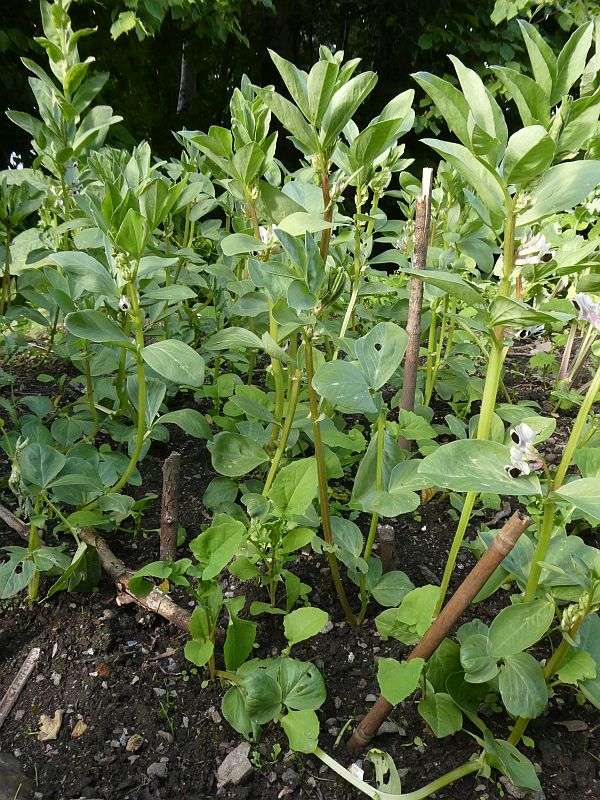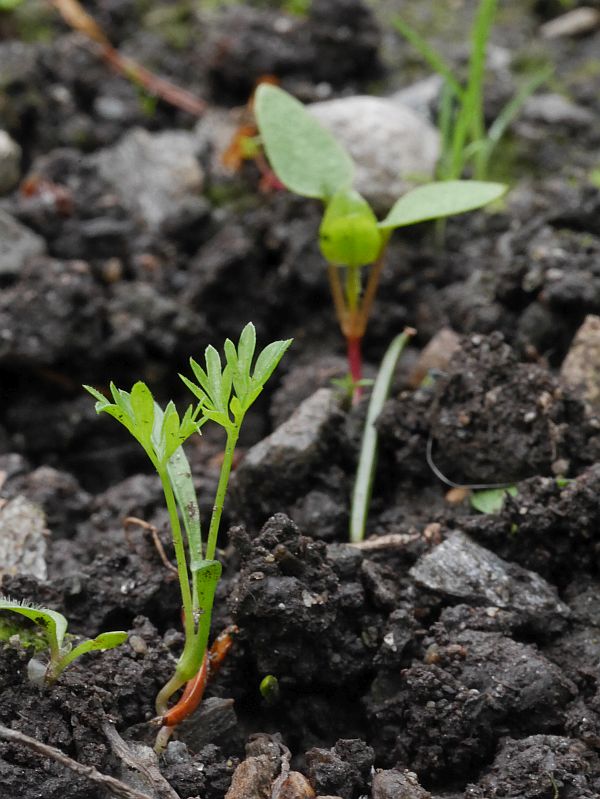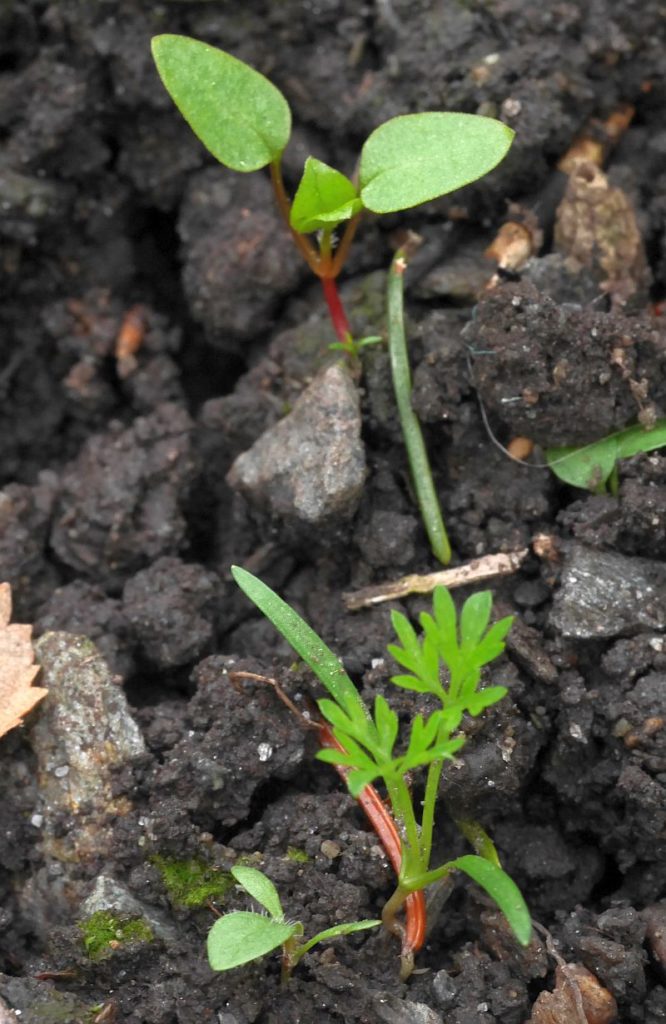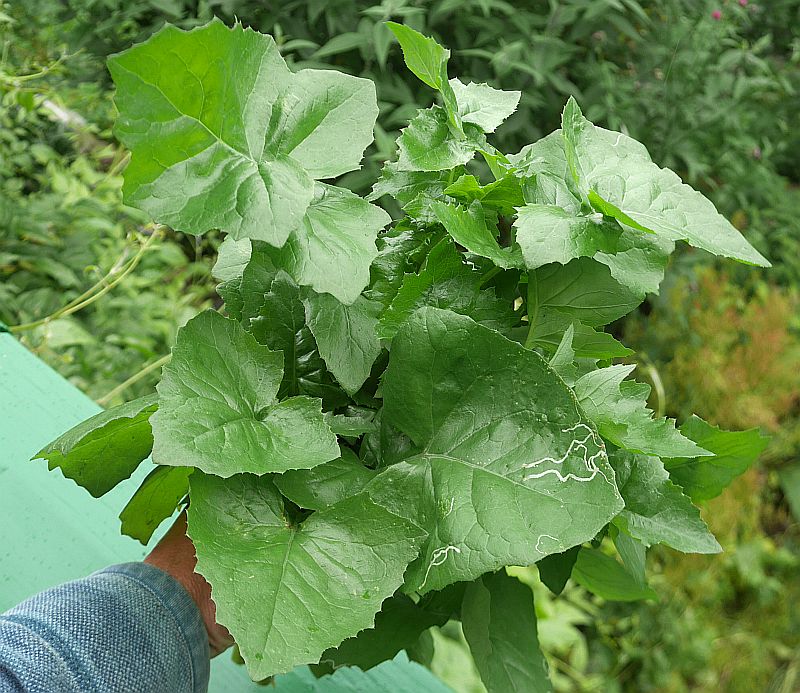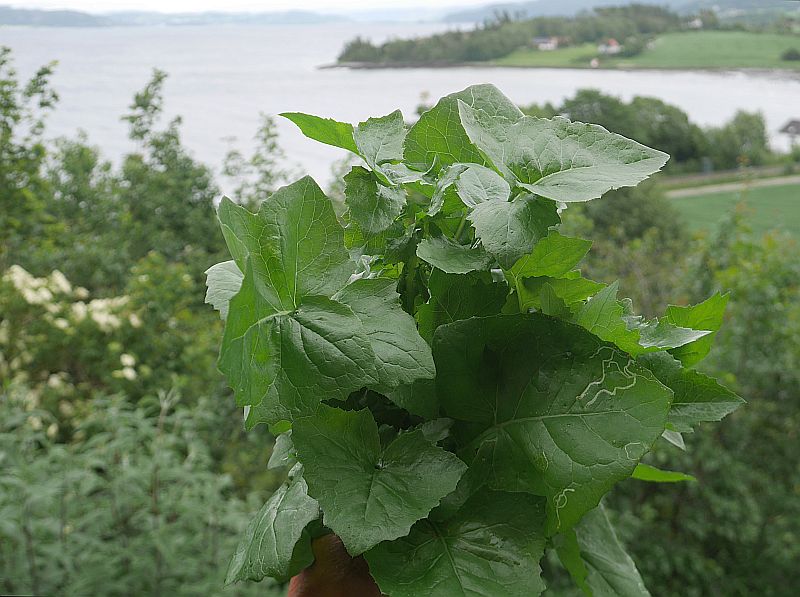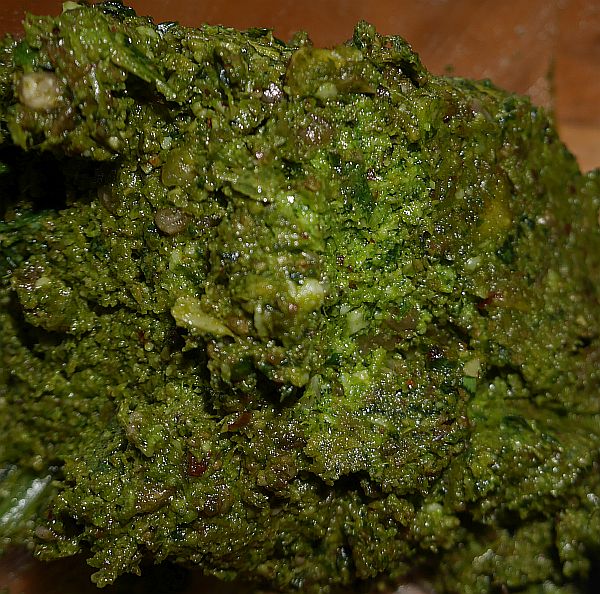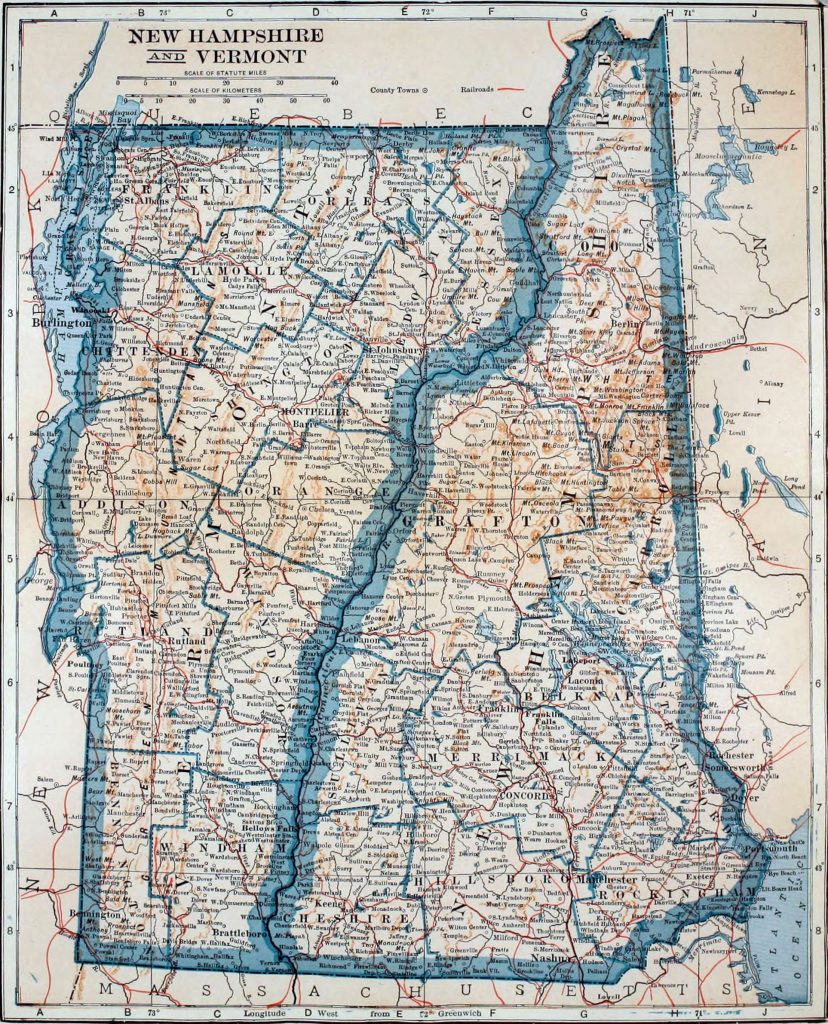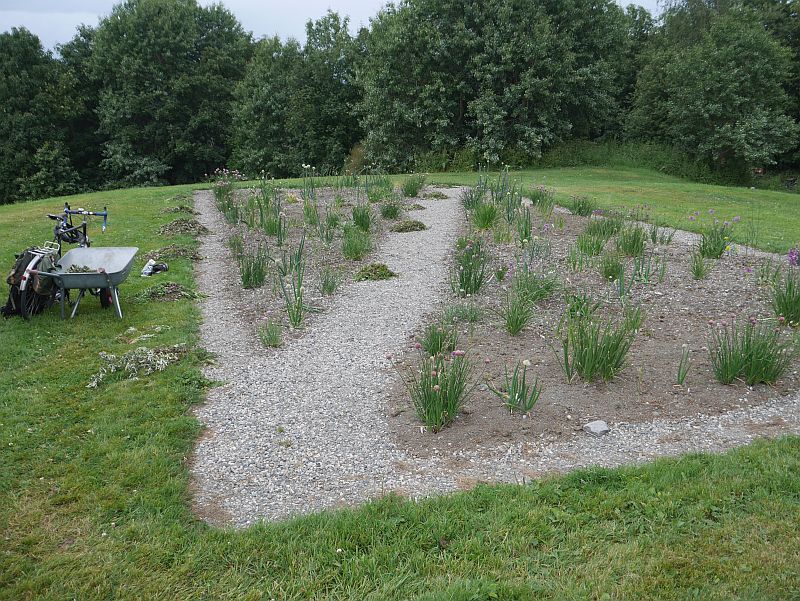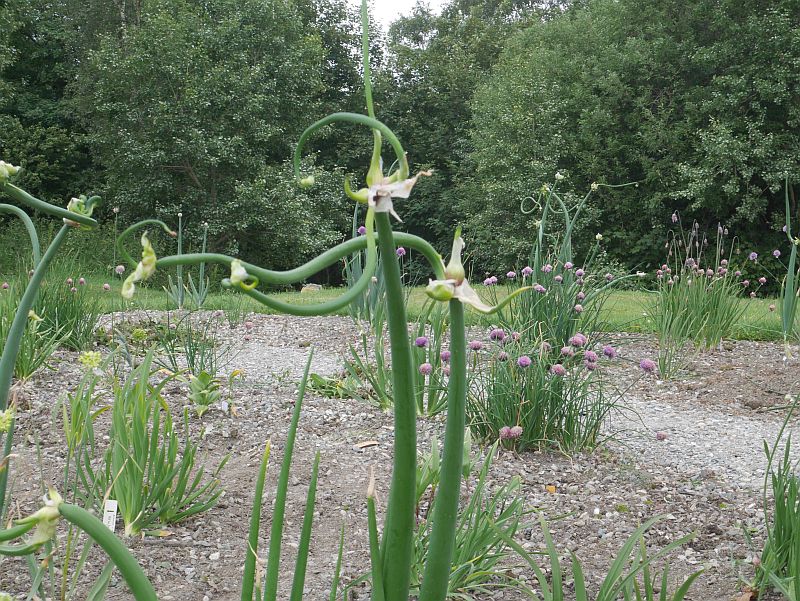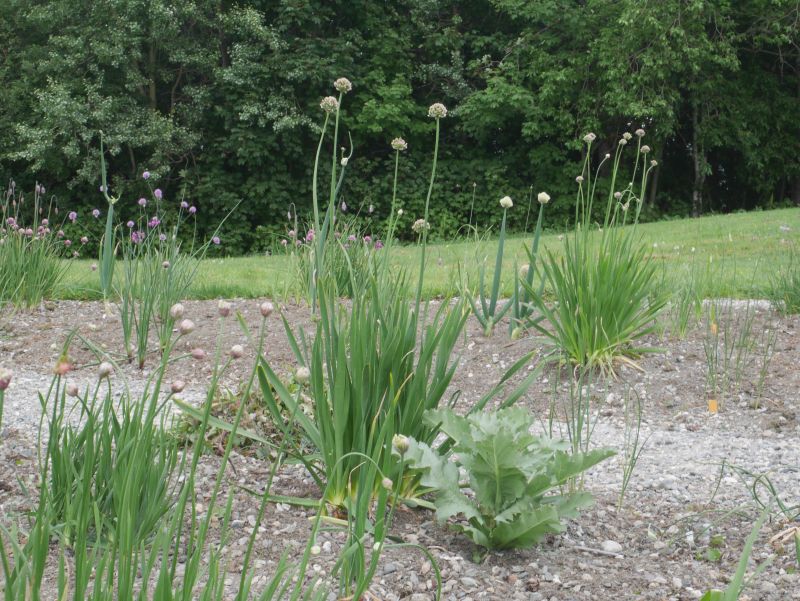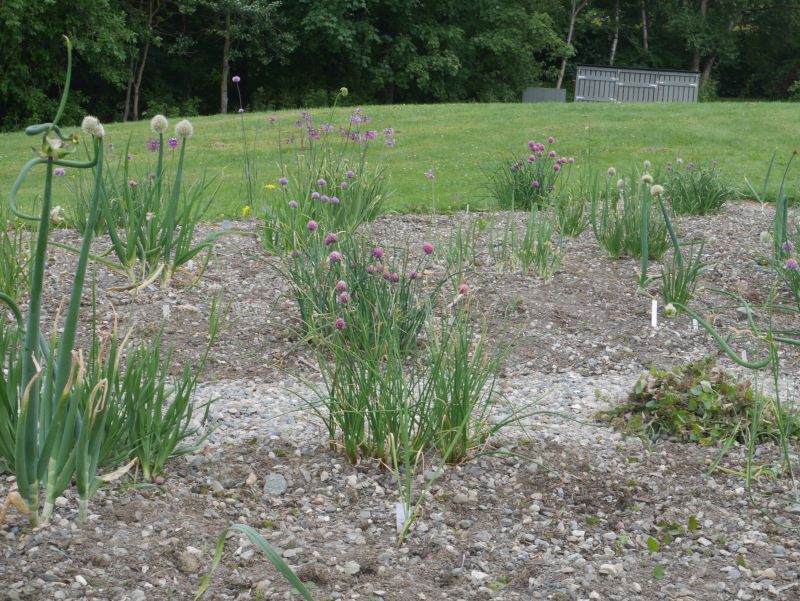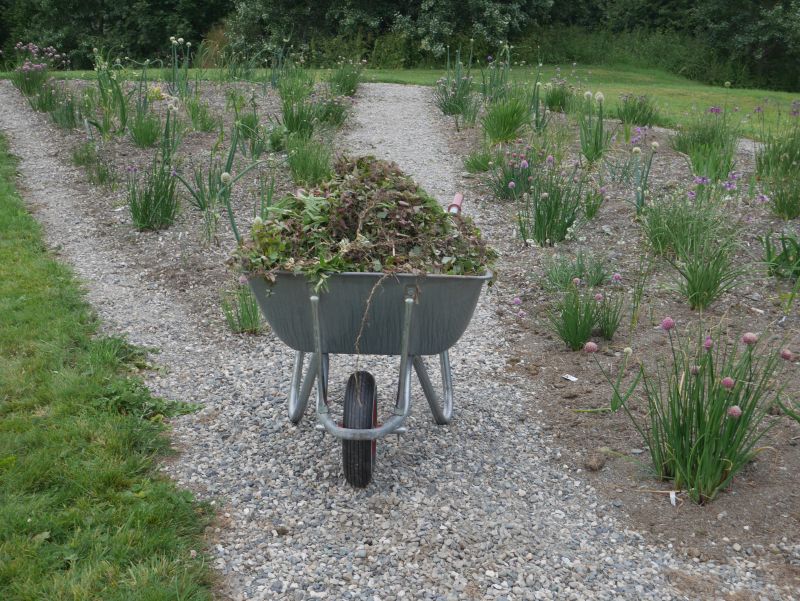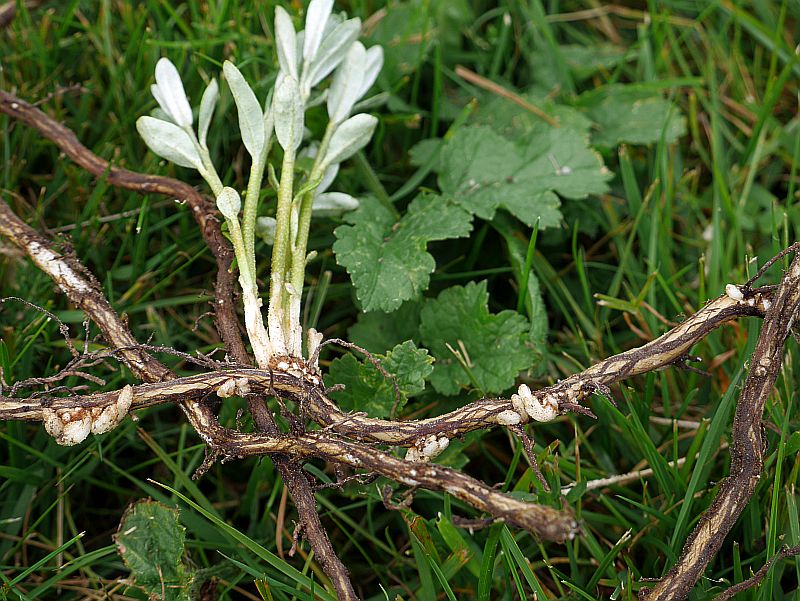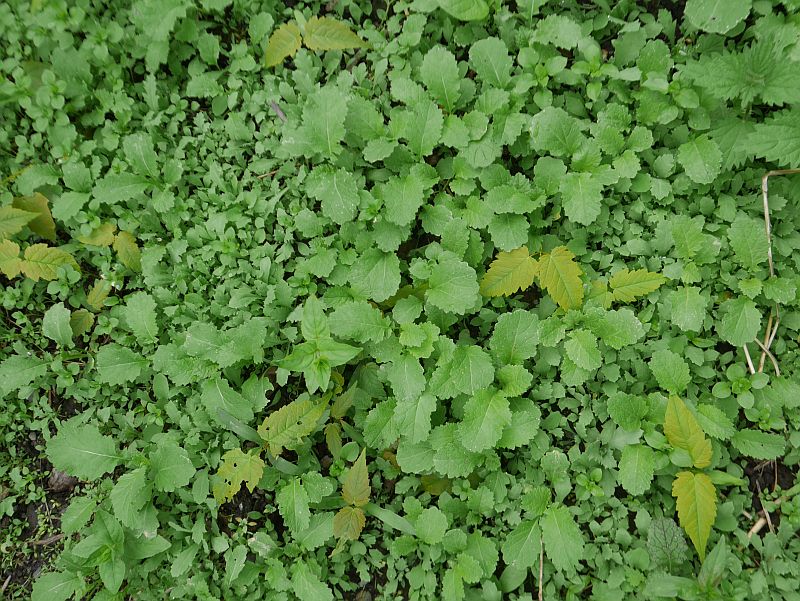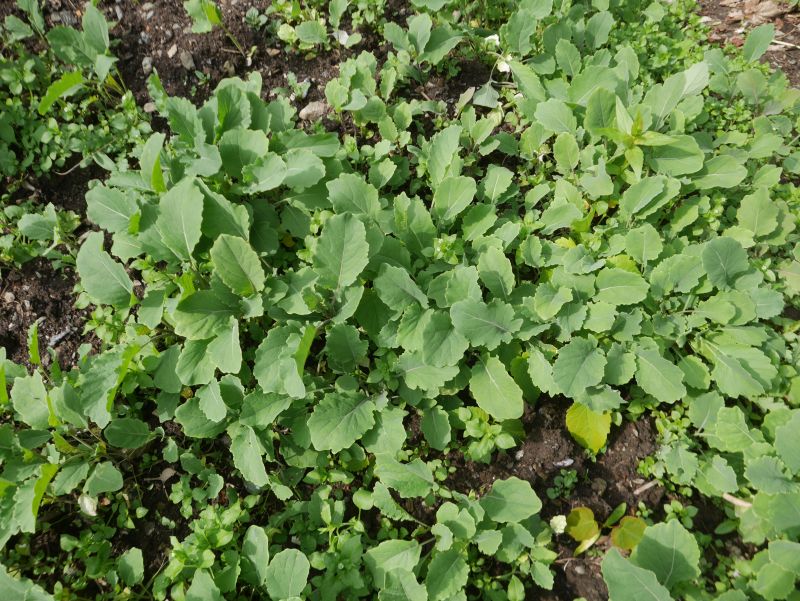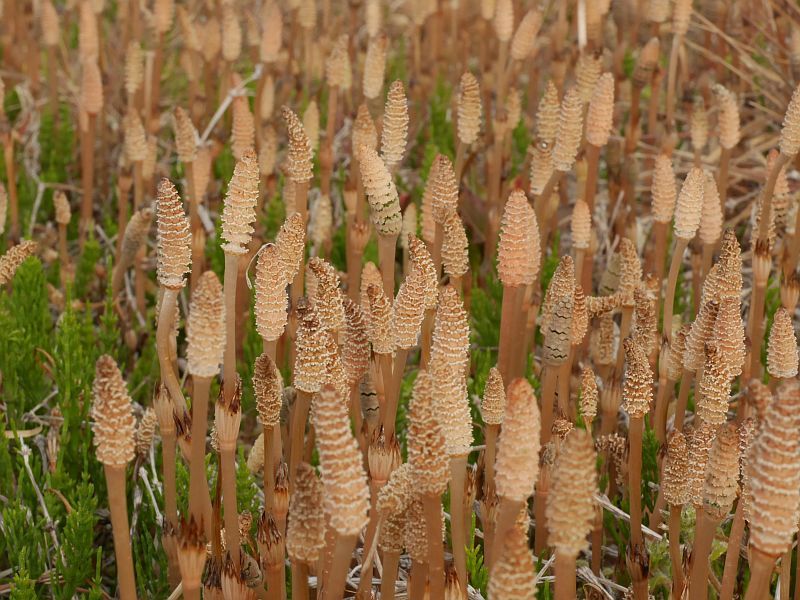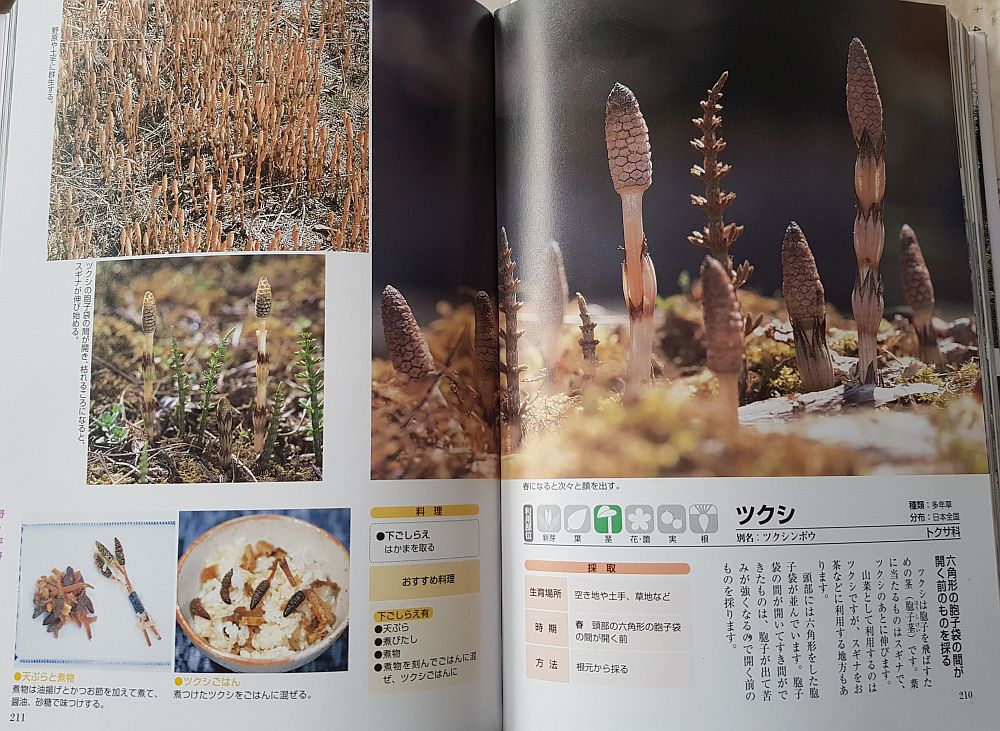I think it was Nathan Shannon who sent me seed of the white-flowered variant of common sow thistle (Sonchus oleraceus), now blooming for the first time!
There are 10+ pages about Sonchus oleraceus in my book and also other blog posts on this site, probably my most used vegetable in July-August each year!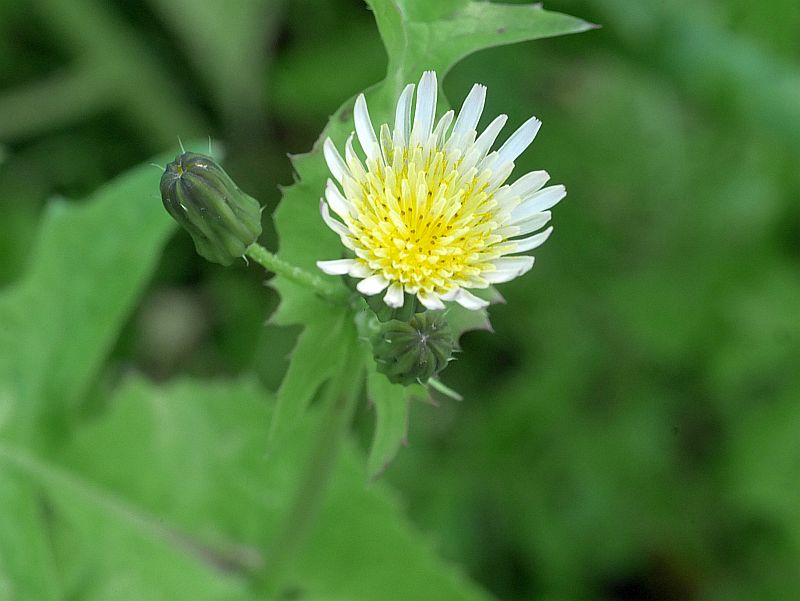

Category Archives: weeds
No thanks no dig
Before I go any further, I should say that 2/3 of my cultivated area is almost 100% no dig (perennials is the ultimate no dig) as I grow perennial vegetables, fruit, berries and nuts. I rarely dig in these areas at all as I only plant once and don’t disturb the plants for years. I do still grow annuals on my raised beds…beds which are about 1.2m wide and are never walked on. I add compost on most of the beds each spring and lightly dig over to incorporate the compost and, surprising to most folks, to encourage the weeds to germinate.
There’s one weed in particular that I’m encouraging, Sonchus oleraceus (common sow thistle / haredylle). As I’ve written before (also in the 12 page essay in my book on the sow thistles), this is my favourite summer leafy green vegetable which I eat most days from July to September. It grows quickly and is actually more nutritious than standard greens. It’s also rich in antioxidants and I love it’s slightly bitter taste which goes well with pretty well any dish I might prepare, always mixed with other “vegetables of the day”. We ate it tonight in a pea soup and, yesterday, in a green pasta sauce and the day before that in pizza…
Yesterday, I weeded my second crop broad beans which were growing in a sea of “weeds” and as I weed I selectively allow the sow thistle to grow on between the beans and on the edge of the bed (you can think of this as “WEEDING YOUR WEEDS”). The video and pictures show the broad beans with the young self-seeded sow thistle plants in between. These will grow up quickly in the next 2-3 weeks and I harvest just before they start flowering. This doesn’t interfere with the growth of the broad beans which take much longer to mature to harvest. Later on, the next wave of sow thistle will be allowed to grow on the edges of all the beds where it doesn’t interfere with the main crops, a method used by the Maori of New Zealand which inspired me to introduce Sonchus oleraceus to my garden. Eating your weeds can significantly increase your yield. I must admit that I love weeding, a quiet time in the garden observing wildlife around me…….similarly, I love washing up, both quiet times contemplating. There’s even a name for weeds that are cropped…it’s a cryptocrop. Cryptocropping has been practised by many other peoples around the world.
Any nutrients or soil which might be washed out from my annual beds during periods with naked soil ultimately end up in my forest garden and perennial plantings below, so are not lost! However, there isn’t much loss as my soil is high in humus after over 35 years adding compost!
I’ve tried no dig in the past, but I would need a much bigger area to produce sufficient material for mulching and I also found that in my shady cool garden the soil heated up much too slowly and slugs were also a bigger problem.
In the video, I zoom into the low growing young sow thistle plants between the taller broad bean plants:
Hablitzia as a weed!
Hablitzia as a weed!
While researching Hablitzia tamnoides for my book Around the World in 80 plants (2014) I found the following simple entry in a 19th century encyclopedia of ornamental plants: ![]() The author was clearly not impressed…..
The author was clearly not impressed…..
Further Frederik Christian Schübeler (1815-1892) who was professor of botany and manager of the Oslo botanical garden at Toyen in Oslo from 1866-92 also noted from northern Norway that
“At Maalselvdalens Vicarage (69 deg. 10 min. N), where it also grows very well, it reaches 8 feet (2.5m) and doesn’t only give mature seeds, but spreads even in the garden as a weed.”
I found this difficult to believe and thought initially that it had been confused with good king Henry (Chenopodium bonus-henricus) which can be very weedy in a garden. I only had one plant at the time and I struggled to get more than a couple of seeds from it. Introducing a second plant, suddenly there was a lot of seed and seedlings appeared around the mother plants.
Nowadays it appears in many parts of the cultivated parts of my garden spread by the low friction seeds blowing around on ice in the winter and through my compost. Small plants often turn up as a weed in pot plants indoors which have been fed with compost. This is a plant which germinated in a pot with a bay tree (Laurus nobilis) some years ago. When the bay died, I let the Hablitzia grow on and it now uses the bay as a climbing frame!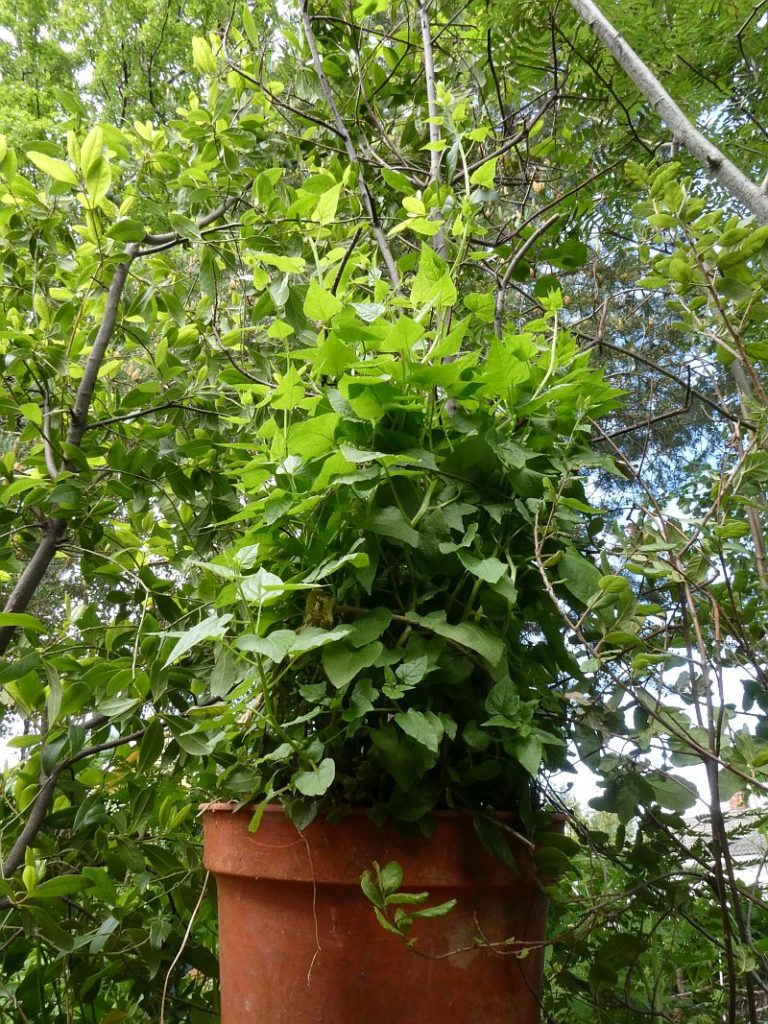
Nevertheless, Hablitzia seems to depend on naked earth to establish itself here and there are no reports of it escaping into nature approaching 150 years after its introduction as a garden plant here.
Yesterday, I was weeding Hablitzia from newly emerged carrot seedlings!
Sonchus and Basil Pesto
I made a sow thistle basil pesto last night together with basil grown in my office at the botanical gardens! I’m an office basil grower of over 40 years, having started when I was a student in 1978 (see http://www.edimentals.com/blog/?p=5221, where I made pesto and Allium wallichii, the Sherpa or Nepal onion)
Last night I used garlic and more Johannes’ shallots (Allium x cornutum; see http://www.edimentals.com/blog/?p=22601)
Garlic Barley Weedotto!
I have a relaxed approach to weeds and weeding and don’t mulch my beds like no dig gardeners do as I consider the weeds to be an important edible resource which increases the yield rather than decreasing as most people think! If weeding becomes harvesting, it becomes less of a chore!
The greens in the barlotto were mostly weeds harvested when weeding my garlic which has grown well despite the ground cover of weeds (the garlic roots are deeper than the weed roots).
NB! Barlotto (Barley risotto) is a local and more nutritious and healthy food as we can’t grow rice !

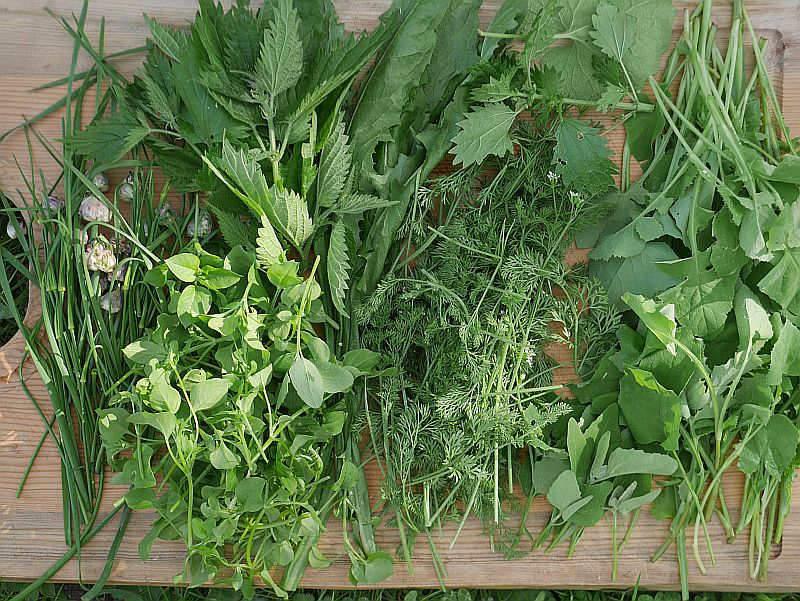




Weeding Vermont!
In the previous blog a week ago linked above, I wrote:
“The Allium garden at Ringve has grown well as have the so-called weeds (mostly very young birch trees!). I spent the afternoon weeding and documenting the right hand (easternmost bed)….now known as the New Hampshire bed (I’m told the two beds resemble a map of Vermont and New Hampshire) (As it looks like the garden will be known as Chicago-hagen due to the fact that the native american name Chicago means onion)!!
This is the link to the last album I made from 31st May: https://www.facebook.com/media/set/?set=a.10156051646095860.1073743203.655215859&type=1&l=cbacd0612e”
Ragged Jack kale and Siberian onion sourdough pizza


No dig?
Tsukushi
On my study tour to Japan, I remember eating tsukushi 3 times, all as tempura and even found a farm growing it (see the pictures below). The best vegetables for tempura are strong tasting herbs such as tsukushi, green udo, dandelion etc. as the oil coats the tongue reducing the perception of bitterness!
This is a plant I would not recommend planting in a garden as it is one of the hardest plants to remove once you have it and many gardeners fight a never ending war on it!
My Facebook friend Kiku Day in Denmark allowed me to post her own cooking description: “You need to pick the fertile stems that shoot during early spring. You have to take off the whorls of brown scale leaves on these stems. Then you need to cook it. I think traditionally the Japanese cook with soy sauce and miring (sweet cooking sake), eat it with white rice or with fried eggs. However, this time I blanched them and fried them in olive oil with salt and pepper. I have to say that the “heads” of the plant are quite bitter. So you have to like bitter taste. Also, don’t eat the green plant that comes later but use those for tea.”

